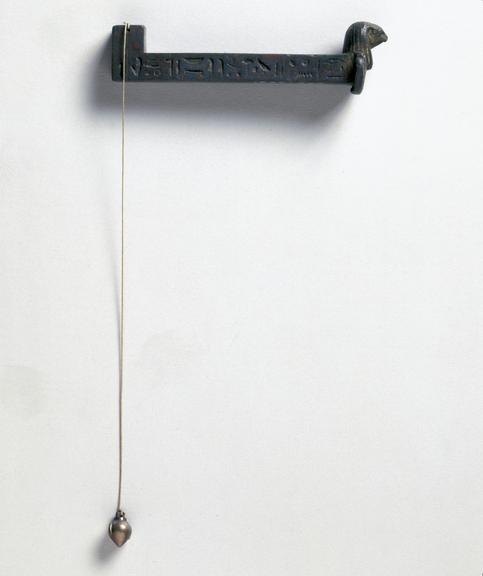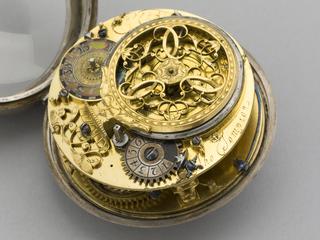
Egyptian Merkhet
- Made:
- 600 BCE in Egypt








Merkhet, a timekeeping and surveying instrument, made in Ancient Egypt, 600BCE. Made in bronze with hieroglyphic text inlaid with electrum metal. The device has been fitted with a replica plumb bob, probably at some point during the early twentieth century.
The hieroglyphic inscription indicates that this instrument was the property of Bes, son of Khonsirtis (Khensardais var.), an astronomer priest of the god, Horus of Edfu in Upper Egypt. As a timekeeping instrument, it would have been used to determine the hours by the sun during the day and by onserving the passage of selected stars across the north-south meridian during the night. As a surveying instrument, it would have been used to layout axes of buildings.
Details
- Category:
- Time Measurement
- Object Number:
- 1929-585
- Materials:
- bronze, electrum (gold-silver alloy) and textile
- Measurements:
-
overall: 25 mm x 93 mm x 22 mm, 0.098 kg
- type:
- sundial
- credit:
- Dr Howard Carter




